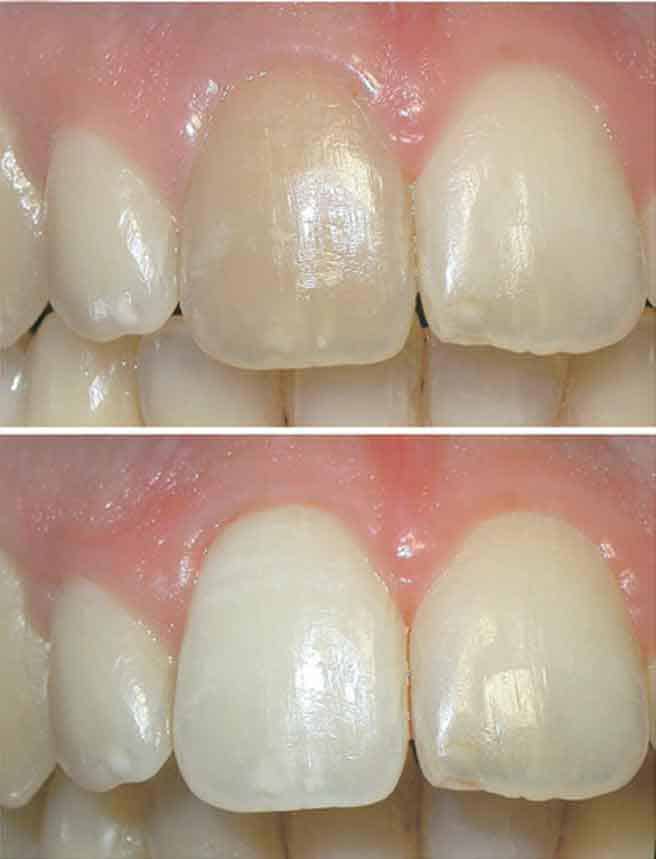Internal Bleaching

You’ve had a root canal on one of your front teeth and now you’ve noticed the tooth is turning gray. Now what? Sometimes changing the temporary filling in the back with a permanent white filling is enough to eliminate this graying. If not, internal bleaching is a great option to restore luster to teeth after root canal treatment.
What is internal bleaching?
Internal bleaching is the process of bleaching or whitening a tooth from the inside out. Unlike traditional tooth whitening, where whitening agents are applied to the outside of the tooth, internal bleaching is completed from the inside out. In cases of trauma or caries, the discoloration begins from inside of the tooth and spreads outwards. These types of stains can be eliminated by chemical means, via internal bleaching (a more conservative option), or by crowning or bonding the tooth surface in order to mask the discoloration. Oftentimes, a combination of internal bleaching and restorative therapy is used.
How is internal bleaching different than tooth whitening?
Traditional tooth whitening removes stains from the external surfaces of the teeth. There are a myriad of over the counter and dentist prescribed methods to achieve this goal, all of which are applied to the outside of vital or non-vital teeth. Internal bleaching on the other hand involves placing peroxide crystals inside of your tooth. In order to perform this type of whitening, a root canal must have been completed prior to starting treatment.
At your dental appointment, a small hole will be made in the back of the tooth and any debris will be removed. Then, the bleach crystals are placed inside of the tooth and the access sealed with a temporary filling material. Sometimes the bleaching process can take as little as 30 minutes, but more often than not, the bleach is allowed to sit inside of the tooth for 1-2 weeks. At this time the tooth is re-evaluated by your dentist. This process can be repeated if the desired color has not been achieved. Since the tooth has already been root canal treated, this process is painless and you are able to eat and drink normally while the bleach is inside of the tooth.
It is important to note that internal bleaching may not be able to eliminate all staining. In these cases, a crown is indicated in order to match the root canal treated tooth to the adjacent teeth and to protect the root canal treated tooth from biting forces.
If you think you might be a candidate for internal bleaching, talk to your dentist at Metropolitan Dental Care to see if this is the right treatment for you!
AUTHOR
Dr. Lauren Liebman
